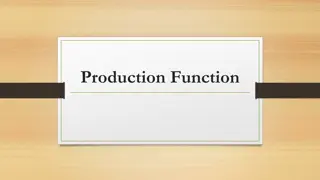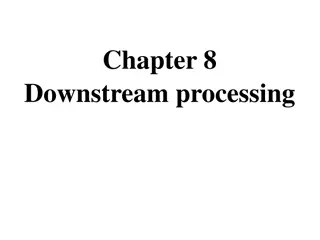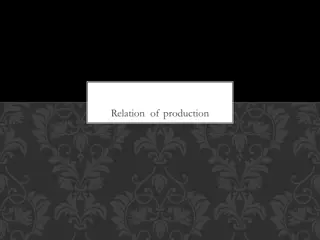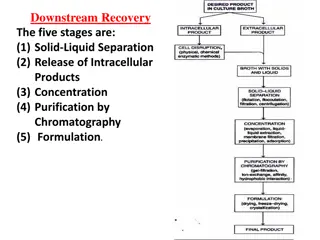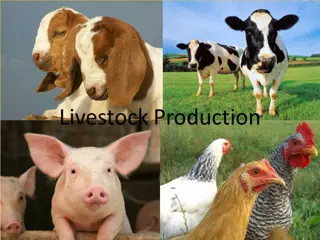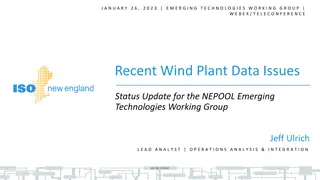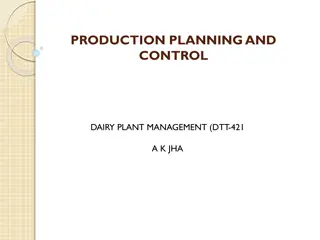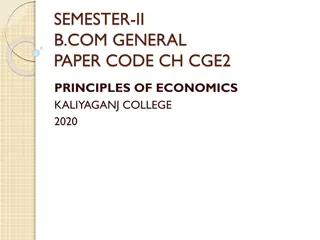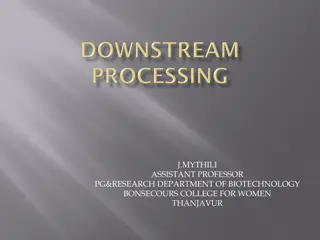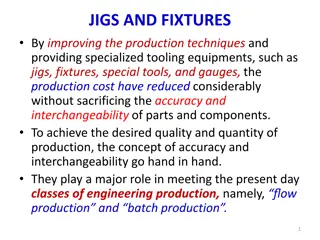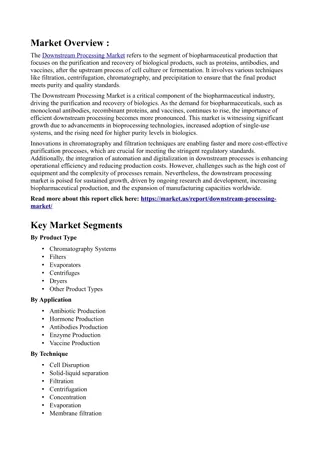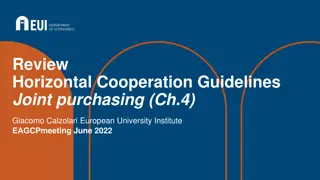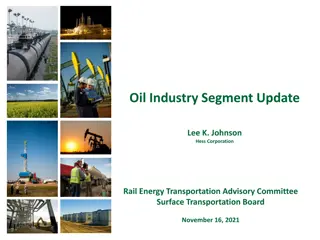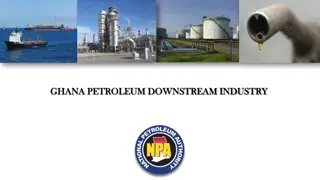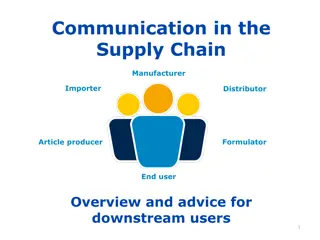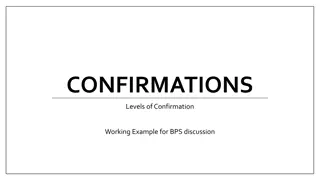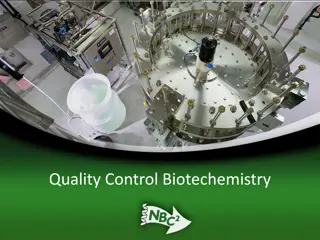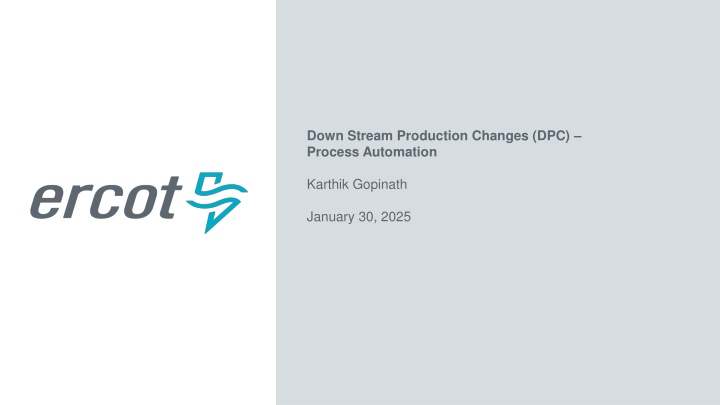
Enhancing Downstream Production Changes Process
Downstream Production Changes (DPC) Process Automation aims to streamline the process of making model changes in production between weekly loads to ensure system reliability. The DPC process involves updating network models in real-time, incorporating feedback from transmission operators, and implementing specific data modifications promptly. However, the current manual nature of DPC tasks leads to inefficiencies and delays. By leveraging automation and high-level implementation approaches, this effort seeks to enhance operational efficiency and accuracy in managing DPC submissions.
Download Presentation

Please find below an Image/Link to download the presentation.
The content on the website is provided AS IS for your information and personal use only. It may not be sold, licensed, or shared on other websites without obtaining consent from the author. If you encounter any issues during the download, it is possible that the publisher has removed the file from their server.
You are allowed to download the files provided on this website for personal or commercial use, subject to the condition that they are used lawfully. All files are the property of their respective owners.
The content on the website is provided AS IS for your information and personal use only. It may not be sold, licensed, or shared on other websites without obtaining consent from the author.
E N D
Presentation Transcript
Down Stream Production Changes (DPC) Process Automation Karthik Gopinath January 30, 2025
Down Stream Production Changes (DPC) Process Automation Objectives of Today s Discussion o Refresher on DPC Automation effort concept o Go over feedback received from TOs ONCOR, LCRA, Center Point o Present high-level implementation approach with using OS UI for DPC Submissions o Implementation Timelines This effort provides new tool to Market Participants to facilitate DPC submission process. 2 PUBLIC
Down Stream Production Changes (DPC) Downstream Production Change (DPC) is a standard process that makes changes to the Network Model in production in between the weekly model loads without having to load a new model (database load). This process is managed by the multiple teams at ERCOT (Network Modeling, GMS, Shift Engineers, Operations etc.). DPC process helps update the network model in both Energy and Market Management systems (EMS and MMS) incorporating the changes submitted by the transmission operators that are critical to maintaining the reliability of the system. The DPC process allows ERCOT to make specific data modifications in real-time including: o Static Line / Transformers Ratings o Dynamic Line Ratings o Line / Transformer Impedance o Contingency Definition updates o Enabling and Disabling of Contingencies o GTC updates o RAP and RAS changes GTC and RAP/RAS definition updates related DPCs are submitted by ERCOT Operations team. 3 PUBLIC
Down Stream Production Changes (DPC) DPC process is intended to make model changes in production between weekly model loads as necessary, not for model changes that can follow normal NOCMR timelines. Current High level DPC Process Jira Process 1. Review and Approve by Operations team 2. Track DPC implementation in EMS/MMS systems across multiple models MP Review Model and Create DPC EMS/MMS NMMS (Submits Model changes for DPC) DPC process demands significant collaboration efforts between several departments within ERCOT and market participants. It requires significant amount of manual effort to create, validate, track and implement DPCs in multiple environments across multiple weekly model loads. The manual nature of DPC tasks often leads to inefficiencies, delays, and increased resource loading across several departments within ERCOT. This multifaceted process demands extensive time and resources to ensure accuracy and efficiency. 4 PUBLIC
Summary of feedback received from TOs TSP initiates new DPC submission when an operational line or transformer ratings / Impedances that gets published from their engineering team, is different from ERCOT Model ratings / Impedances. Based on rating comparisons done every month at TSP side & if they see discrepancy with ERCOT Model ratings. Current DPC NOMCR submission process involves Submitting DPC NOMCRs into ERCOT modeling system Send out email to notify ERCOT network modeling group Attach a DPC request form and reason for DPC with NOMCR After DPC is processed into ERCOT system, update TSPs EMS model to reflect the change. Current DPC CAMR submission process involves For equipment outages / reclosures, submit a DPC CAMR to enable Manual contingencies within 3 business days of effective date. If a new CTG is needed to reflect new configuration, attach an excel sheet with proposed CTG definition in CAMR. Submit a separate DPC CAMR within 3 business days of configuration returning to Normal. When active CTGs are found to be incorrect, CAMR DPC submitted to disable or edit incorrect CTGs. New automated DPC process mitigates lot of inefficiencies involved in today s manual DPC tasks, by providing a new UI for TSPs to submit DPCs, with effective dates. It also provides a list of DPCs with their status (planned / Implemented) with a historian for past DPCs implemented. 5 PUBLIC
New DPC Tool High Level Implementation Details New displays and dash boards will be added in current Outage Scheduler UI (OS UI) to allow Market Participants to submit DPCs with start and end times. Currently QSEs with resources and TOs have the access to OS UI through ERCOT MIS website A new role will be created to TOs to access these displays using OS UI. ERCOT Operations will review and approve DPCs. Upon approval, DPCs get implemented in ERCOT real-time systems (EMS/MMS) automatically and provides status back to DPC tool. Thereafter, DPCs get implemented automatically in EMS/MMS systems during every week model load until end time of DPCs. This new DPC tool will provide visibility to Market Participants on DPC implementation status in ERCOT EMS/MMS systems. Dashboards will be developed to meet this requirement along with ability to sorting and filtering capabilities 6 PUBLIC
New DPC Tool High Level Implementation Details DPC Tool support following DPC Types o Update Static Line / Transformers Ratings o Update/Add Dynamic Line Ratings o Update Line / Transformer Impedance o Contingency Definition updates o Enabling and Disabling of Contingencies DPC Tool Data Flows: ERCOT Review & Approval MP (Submits DPC changes) OSUI EMS/MMS 7 PUBLIC
Implementation Timelines Development and Testing Timelines o Impact Analysis (IA) Completed Q1 2025 o Project Initiation Q1 2025 o Project Execution start Q2 2025 o New DPC tool changes Development and Testing Q2 Q4 2025 o TOs Testing Q1 2026 o Tentative Go Live Q2 2026 Next Steps. Continue soliciting feedback from Market Participants on their current DPC process and benefits from new DPC process Tuning implementation approach and details based on Market Participant feedback Provide periodic updates on implementation progress through TWG and NDSWG 8 PUBLIC

